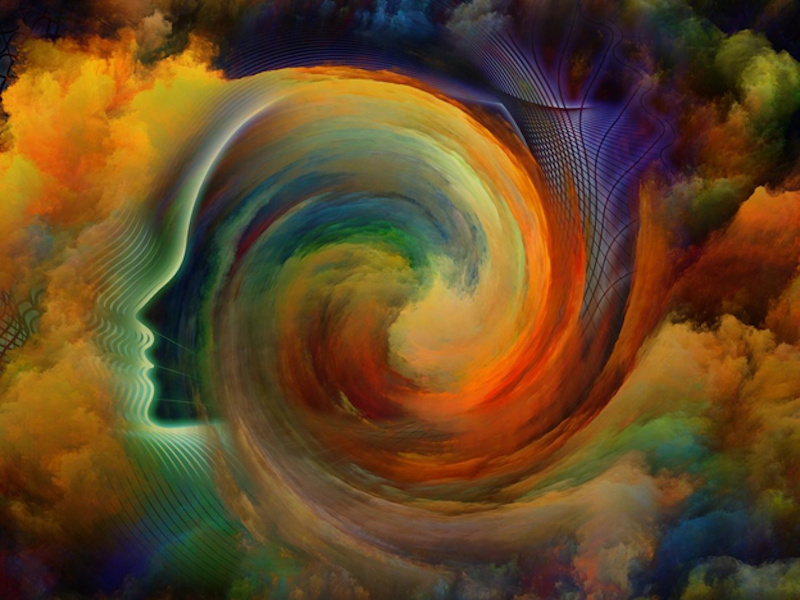Your Mind-Muscles Are Waiting For You

It was first in high school that I began practicing meditation. I was one of the lucky few to have been selected to participate in a meditation course over a semester, and although I am not sure what determined the selection, I know that my spot in the class was a coveted one. Students who took the meditation class had a glow about them that attracted attention, not with words, but with their being. These were the students who associated with all of their classmates, who were able to speak freely with teachers and peers alike, who had ambitions and the confidence to share their hopes with others. There was just something unexplainably attractive about the meditation students.
The year I took my meditation course was also the worst social year of my life. Having been misunderstood by the dean of students, I managed to disrupt the social contract of trust with my peers, getting a handful of them in trouble, and turning most of them against me. Looking back on it all now, I really have no idea if my experience of being ostracized was really happening; it’s possible I drummed it all up in my mind.
In either case, had it not been for meditation, I am certain my grades, my hopes and dreams, and my self-confidence would have dramatically plummeted. The well known Jonathan Fields, author and founder of The Good Life Project, recently shared his take on the concept of “Presence”. Broken down into three tiers, Presence at its highest level resembles much of what I discovered as a high school student. In honor of all of us who are slowing down and feeling the impact of a global pandemic, the everlasting impact of my meditation practice rises to the surface of my attention. Meditation taught me how to quiet my inner critic, calm my anxiousness, and step into an awareness of my thinking habits such that I began to develop a “mind-muscle” for thinking patterns that served me well rather than patterns that would provoke fear and take hold of my nervous system in damaging ways.
The three tiers that Fields suggests Presence can be broken down into are “Endowed”, “Willed into Existence”, and “Ambient” (Fields, Three Types of Presence: It’s a Grace Thing, 9/2019.) The first tier, Endowed, is relatively simple to experience: feel the temperature of the air on the skin, the scent in the air, the sounds about you. This requires the employment of your senses and often provokes past thoughts to arise. Think how the smell of pumpkin pie naturally pulls memories of Autumn leaves, table gatherings and perhaps familial love to the surface of your attention. The present experience is fleeting if the thinker drifts into the nostalgia of the moment. The second tier, “Willed into Existence”, involves the strengthening mind-muscle of awareness. It is here where the thinker recognizes the thoughts that appear at the “Endowed” level, and allows those thought to be observed rather than latched onto. The thinker is able to prevent slipping away into the past or imagined future, yet simultaneously observes the thoughts about them both, while maintaining an acute awareness of the thinking while its happening. This mind-muscle is the key element that supported my own success in high school. By learning how to observe my thoughts, I was able to keep from spinning out of control, fearing my peers and teachers, and imagining a disastrous future of pain and loneliness. Although those thoughts certainly happened, my awareness muscle was developing enough through meditation,that I was able to notice the thoughts as something outside of what was really happening.
The more I practiced meditation, the stronger my mind-muscles for awareness grew. It wasn’t an immediate experience, but by the time I reached my early 20’s, I was naturally living in the “Ambient” world of Presence. My mind was flexible enough to stretch beyond limiting beliefs and agile enough to shift perspectives that would have otherwise prevented me from moving in the directions of my hopes and dreams. You know when you are in “Ambient” presence when the body feels the buzz of vitality through every part of it, the mind is still and prepared for response, and the spirit, if you will, is steeped in gratitude, even for some of life’s hardest experiences. The coolest thing about “Ambient” presence is that once it has been experienced, it is nearly impossible to unlearn it. It is a radiance that most of us long for. It is a state of being that can allow for us to begin to answer questions that are at the heart of who we are.
When we give ourselves the opportunity to learn mindfulness through practices that involve movement and meditation, we are creating the groundwork to carry ourselves confidently through a time of uncertainty. Let’s all take a moment today to feel the air around us, notice the thoughts our senses provoke, and then share our joy for the ability to be aware of that experience with someone close to us. Isn’t this the real gift of being human?



